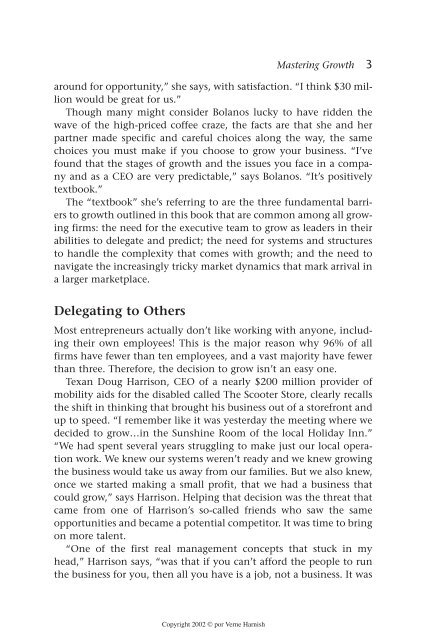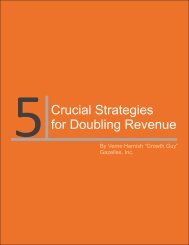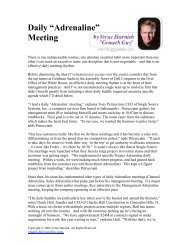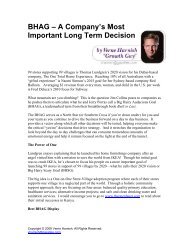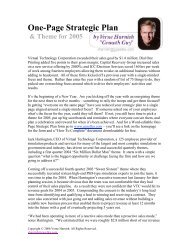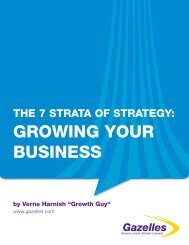english - Gazelles
english - Gazelles
english - Gazelles
Create successful ePaper yourself
Turn your PDF publications into a flip-book with our unique Google optimized e-Paper software.
Mastering Growth 3around for opportunity,” she says, with satisfaction. “I think $30 millionwould be great for us.”Though many might consider Bolanos lucky to have ridden thewave of the high-priced coffee craze, the facts are that she and herpartner made specific and careful choices along the way, the samechoices you must make if you choose to grow your business. “I’vefound that the stages of growth and the issues you face in a companyand as a CEO are very predictable,” says Bolanos. “It’s positivelytextbook.”The “textbook” she’s referring to are the three fundamental barriersto growth outlined in this book that are common among all growingfirms: the need for the executive team to grow as leaders in theirabilities to delegate and predict; the need for systems and structuresto handle the complexity that comes with growth; and the need tonavigate the increasingly tricky market dynamics that mark arrival ina larger marketplace.Delegating to OthersMost entrepreneurs actually don’t like working with anyone, includingtheir own employees! This is the major reason why 96% of allfirms have fewer than ten employees, and a vast majority have fewerthan three. Therefore, the decision to grow isn’t an easy one.Texan Doug Harrison, CEO of a nearly $200 million provider ofmobility aids for the disabled called The Scooter Store, clearly recallsthe shift in thinking that brought his business out of a storefront andup to speed. “I remember like it was yesterday the meeting where wedecided to grow…in the Sunshine Room of the local Holiday Inn.”“We had spent several years struggling to make just our local operationwork. We knew our systems weren’t ready and we knew growingthe business would take us away from our families. But we also knew,once we started making a small profit, that we had a business thatcould grow,” says Harrison. Helping that decision was the threat thatcame from one of Harrison’s so-called friends who saw the sameopportunities and became a potential competitor. It was time to bringon more talent.“One of the first real management concepts that stuck in myhead,” Harrison says, “was that if you can’t afford the people to runthe business for you, then all you have is a job, not a business. It wasCopyright 2002 © por Verne Harnish


